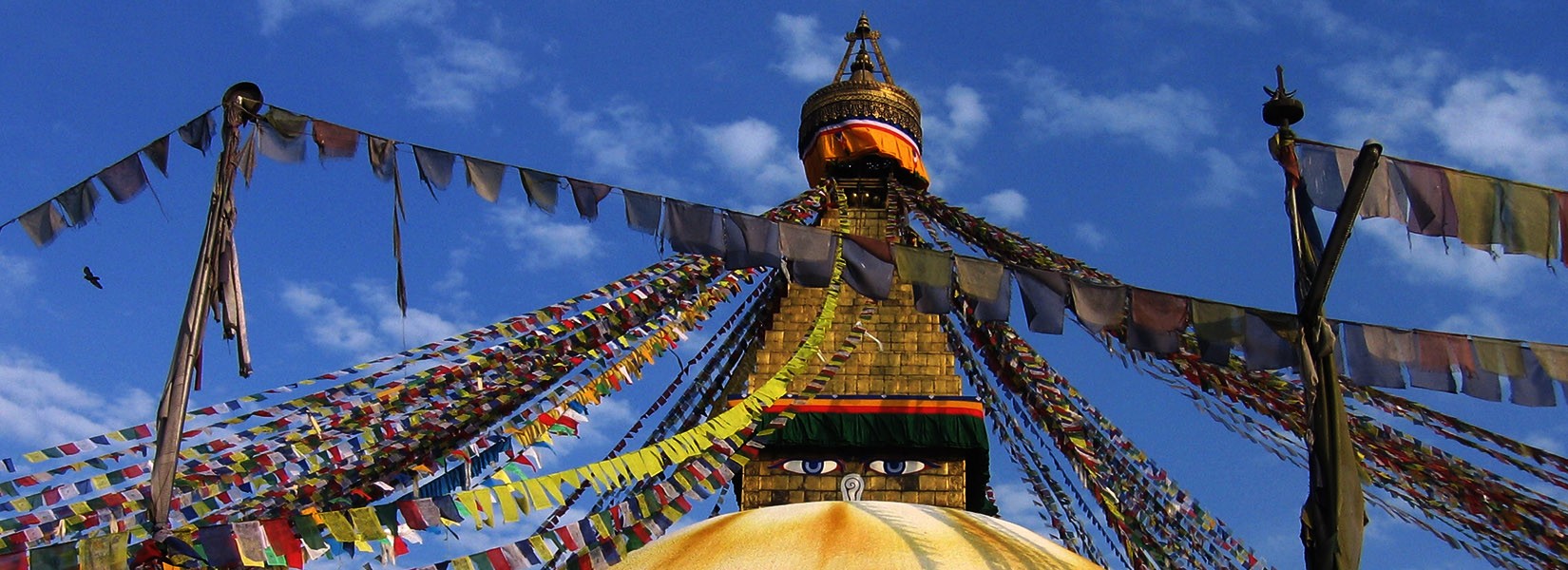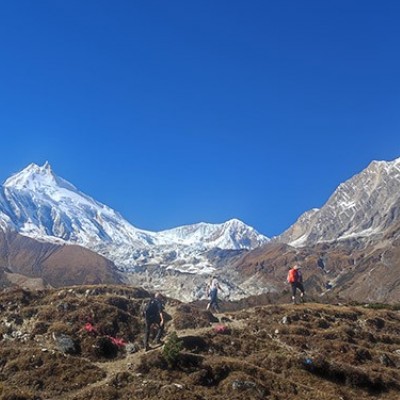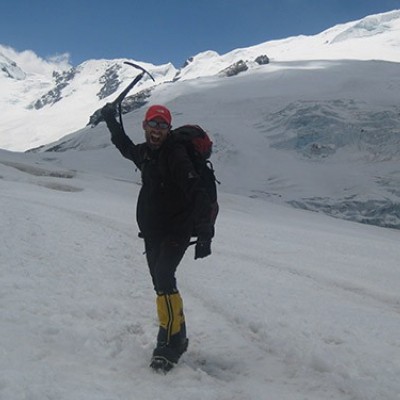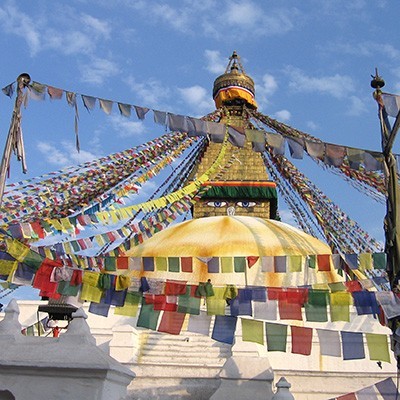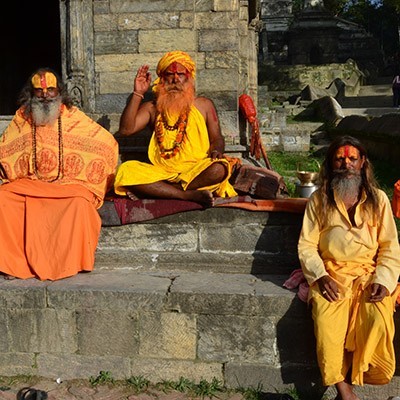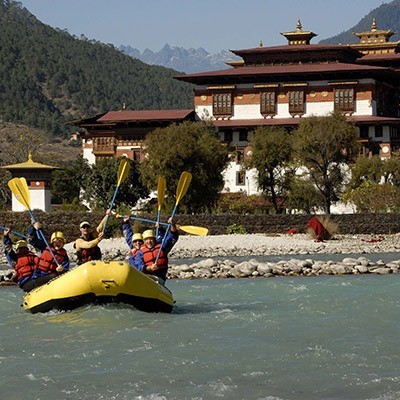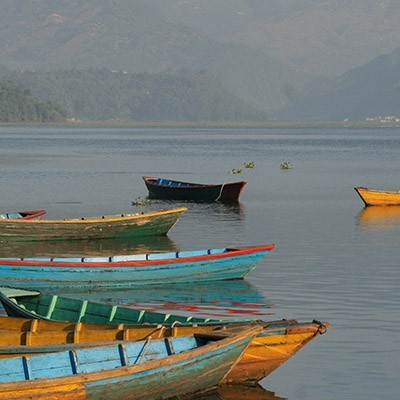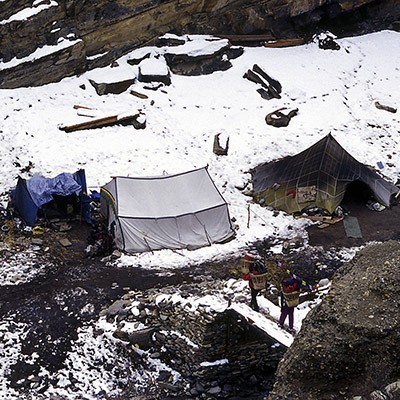Nepal, often called the Land of the Himalayas, is a small yet breathtakingly diverse country nestled between India and China. Known worldwide as the home of Mount Everest (8,848.86 m / 29,031 ft) and the birthplace of Lord Buddha, Nepal is a dream destination for trekkers, mountaineers, and adventure travelers. Despite its compact size, the country offers a remarkable variety of landscapes — from subtropical jungles and fertile plains to towering peaks and high-altitude deserts.
For adventurers, Nepal is best known for its world-class trekking routes such as the Everest Base Camp Trek, Annapurna Circuit, and Langtang Valley Trek, as well as challenging expeditions like Island Peak and Mera Peak. Beyond trekking, Nepal offers cultural immersion, wildlife safaris, white-water rafting, paragliding, and spiritual experiences in ancient monasteries and temples.
Geography and Landscape
Nepal stretches across an area of 147,516 square kilometers and is divided into three main geographical regions:
The Terai (Lowlands):
Fertile plains bordering India.
Dense jungles and wildlife sanctuaries such as Chitwan National Park and Bardia National Park.
Ideal for jungle safaris, bird watching, and cultural experiences with the Tharu community.
The Hills (Mid-Himalaya):
Rolling green hills, terraced farms, and valleys where most of the population lives.
Includes Kathmandu Valley, Pokhara Valley, and countless traditional villages.
The Himalayas (High Mountains):
Northern Nepal is dominated by the mighty Himalayas.
Eight of the world’s 14 highest peaks above 8,000 meters, including Everest, Kanchenjunga, Lhotse, Makalu, Cho Oyu, Dhaulagiri, Manaslu, and Annapurna I.
Popular for trekking, climbing, and photography.
This unique topography makes Nepal one of the most geographically and culturally diverse destinations on earth.
Culture and People
Nepal is a melting pot of cultures and traditions, home to more than 125 ethnic groups and over 120 languages. The largest communities include the Chhetri, Brahmin, Magar, Gurung, Sherpa, Rai, and Tamang.
Religion plays an important role in daily life. While Hinduism and Buddhism are the two dominant religions, Nepal is a land of harmony where shrines, stupas, and monasteries exist side by side. The Kathmandu Valley alone is home to seven UNESCO World Heritage Sites, including Pashupatinath Temple, Boudhanath Stupa, and Patan Durbar Square.
Festivals are celebrated year-round with color and joy — from Dashain and Tihar to Buddhist celebrations like Lhosar. These events showcase Nepal’s rich traditions, music, dances, and rituals.
Trekking in Nepal
Nepal is considered the world’s premier trekking destination. Whether you’re a beginner looking for short and easy treks or an experienced adventurer aiming for high passes and peaks, Nepal has something for everyone.
PopularTrekkingRegions:
Everest Region (Khumbu):
Famous for the Everest Base Camp Trek, this region offers stunning views of Everest, Lhotse, and Ama Dablam, along with Sherpa culture and monasteries.Annapurna Region:
Known for diverse landscapes and accessible trails such as the Annapurna Circuit, Annapurna Base Camp, and Ghorepani Poon Hill trek.Langtang & Helambu Region:
Close to Kathmandu, Langtang offers beautiful valley treks, Tamang culture, and alpine scenery.Restricted & Remote Treks:
Treks like Upper Mustang, Dolpo, and Kanchenjunga Base Camp provide wilderness adventure and cultural encounters in less-visited areas.Short Treks:
For those with limited time, treks such as Nagarkot, Australian Camp, or Panchase offer Himalayan views within a few days.
Adventure activities Beyond Trekking
Nepal is more than just trekking. Adventure seekers can enjoy:
Mountaineering: From trekking peaks like Island Peak (6,189 m) to expeditions on Everest (8,848.86 m).
Paragliding: Over Pokhara’s Phewa Lake with Annapurna views.
White-water rafting & kayaking: On rivers like Trishuli, Seti, and Bhote Koshi.
Wildlife safaris: In Chitwan and Bardia, where you may spot rhinos, tigers, elephants, and crocodiles.
Mountain biking: Trails through Kathmandu Valley and Annapurna region.
Cultural tours: Explore temples, monasteries, heritage sites, and traditional villages.
Best time to visit Nepal
Nepal is a year-round destination, but trekking and adventure activities are best enjoyed during:
Autumn (September–November): Clear skies, moderate temperatures, and the best visibility for trekking.
Spring (March–May): Warm weather, blooming rhododendrons, and vibrant landscapes.
Winter (December–February): Good for lower-altitude treks and cultural tours, but higher passes may be blocked by snow.
Summer/Monsoon (June–August): Green landscapes and fewer tourists, ideal for Mustang and Dolpo treks (rain-shadow regions).
Why visit Nepal?
Himalayan Majesty – From Everest to Annapurna, the mountain scenery is unmatched.
Cultural Richness – Ancient temples, monasteries, and vibrant festivals.
Adventure Capital – Trekking, rafting, climbing, paragliding, biking, and safaris.
Warm Hospitality – Nepalese are known for their kindness and “Namaste” spirit.
Affordable Travel – Nepal remains one of the most budget-friendly adventure destinations.
Practical information for travelers
Visa: On-arrival tourist visas are available at Kathmandu airport and major border points.
Currency: Nepalese Rupee (NPR).
Language: Nepali is official, but English is widely understood in trekking regions.
Connectivity: WiFi is available in major towns; trekking trails have basic internet access (paid).
Safety: Trekking is safe with proper guides and permits; travel insurance is recommended.
Conclusion
Nepal is a country that truly has it all — towering mountains, diverse cultures, ancient heritage, spiritual depth, and endless adventure opportunities. Whether you dream of standing beneath Mount Everest, watching sunrise over Annapurna from Poon Hill, exploring medieval Kathmandu, or spotting wildlife in the jungle, Nepal promises an experience that stays with you forever.
For trekkers and adventurers, Nepal is not just a destination — it is a journey of discovery, resilience, and connection with nature and culture.
